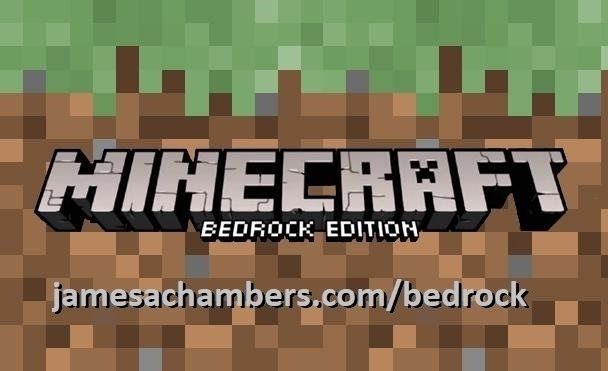
Minecraft Bedrock Edition is the version of Minecraft that powers the iPhone / Android versions (formerly Minecraft Pocket Edition), the Xbox / PlayStation / Nintendo Switch editions and the free Windows 10 Minecraft edition.
Mojang has released a dedicated server which is considered to be in alpha testing. I have found it to be very stable and able to run on a wide variety of hardware.
This script and guide are written to help you get a robust Minecraft Bedrock dedicated server up and running in only a few minutes!
This is the standalone version. The easiest and most problem-free way to run this is using Docker (installed as simply as sudo apt install docker.io): Legendary Minecraft Bedrock Container
I’ve also released a way for Java and Bedrock players to play on the same server using Geyser: Minecraft Java + Bedrock Server Together – Geyser + Floodgate
It’s now possible to convert your worlds between Bedrock and Java versions. Check out my guide on Chunker here for more information.
Features
- Sets up the official Minecraft Bedrock Server (currently in alpha testing)
- Fully operational Minecraft Bedrock edition server in a couple of minutes
- Ubuntu / Debian distributions supported
- Sets up Minecraft as a system service with option to autostart at boot
- Automatic backups when server restarts
- Supports multiple instances — you can run multiple Bedrock servers on the same system
- Updates automatically to the latest or user-defined version when server is started
- Easy control of server with start.sh, stop.sh and restart.sh scripts
- Adds logging with timestamps to “logs” directory
- Optional scheduled daily restart of server using cron
Requirements
- A computer with a 64 bit processor (if you are trying to use ARM read my article on the limitations). 32 bit binaries of the official server are not available so it needs to be 64 bit!
- 1 GB of RAM or higher
- The only officially supported platform by Microsoft is Ubuntu 22.04 / 20.04 (current LTS, recommended)
- Other Linux flavors supported by this script as well as long as they use systemd (for the service). The script assumes apt is installed but there are minimal dependencies so you could install these on another distro (that doesn’t have apt present) and use the script normally.
Recommended Gear
Game Editions
Minecraft: Bedrock Edition is the “Windows 10” version of Minecraft as well as the version of Minecraft on the Xbox / Playstation / Switch. The versions of Minecraft for Android and iOS are also the Bedrock edition.
All of these versions support cross-platform play with each other (but not with the Java edition).

This is the PC Minecraft for Windows 10 (Bedrock) edition of Minecraft. It is able to play cross-platform with other players on Android / iOS / Playstation / Xbox / Switch. Available as a code that is instantly activated to give you permanent access to the game!
Links: Amazon.com*, Amazon.co.jp*, Amazon.co.uk*, Amazon.de*, Amazon.es*, Amazon.fr*, Amazon.it*

The Sony PlayStation version of Minecraft: Bedrock edition.
Links: Amazon.com*, Amazon.ca*, Amazon.com.au*, Amazon.co.jp*, Amazon.co.uk*, Amazon.de*, Amazon.es*, Amazon.fr*, Amazon.it*, Amazon.nl*, Amazon.se*, Amazon.sg*

This is the Nintendo Switch version of Minecraft: Bedrock edition.
Links: Amazon.com*, Amazon.ca*, Amazon.com.au*, Amazon.co.jp*, Amazon.co.uk*, Amazon.de*, Amazon.es*, Amazon.fr*, Amazon.it*, Amazon.nl*, Amazon.pl*, Amazon.se*, Amazon.sg*

This is the Microsoft Xbox version of Minecraft: Bedrock edition.
Links: Amazon.com*, Amazon.ca*, Amazon.com.au*, Amazon.co.uk*, Amazon.de*, Amazon.es*, Amazon.fr*, Amazon.it*, Amazon.nl*, Amazon.sg*
Recommended Storage (Solid State Drive)
I strongly recommend a Solid State drive (SSD) for your server. This is because Minecraft is constantly reading/storing chunks to the disk which makes I/O performance very important.
These are much cheaper than they used to be. Here’s a decent 120 GB one (higher capacity options are available) at a very low price:
The Kingston A400 is reliable, widely available around the world, has low power requirements and performs very well. It’s also very affordable. This drive has been benchmarked over 1000 times at Pi Benchmarks and is the #1 most popular SSD among the community!
Links: AliExpress*, Amazon.com*, Amazon.ca*, Amazon.com.au*, Amazon.co.jp*, Amazon.co.uk*, Amazon.de*, Amazon.es*, Amazon.fr*, Amazon.it*, Amazon.nl*, Amazon.pl*, Amazon.se*, Amazon.sg*
If you have a M.2 NVME slot in your motherboard you can go with a high end drive. This will give your server maximum performance even if a large number of players are running around on the server changing blocks and triggering disk writes.
This is the one I have in my machine. These range from 250 GB to 2 TB depending on how big your server might grow:
The Samsung 980 Pro (NVMe) is a professional grade SSD and one of the fastest in the world. The Samsung NVMe drives have been at the top of this category for a long time and are well trusted for both their performance and reliability / long life.
Links: AliExpress*, Amazon.com*, Amazon.ca*, Amazon.com.au*, Amazon.co.jp*, Amazon.co.uk*, Amazon.de*, Amazon.es*, Amazon.fr*, Amazon.it*, Amazon.nl*, Amazon.pl*, Amazon.se*, Amazon.sg*
Computer / CPU / Memory
Almost any PC made in the last few years will be a x86_64 bit computer. If you have an older computer around that isn’t being used then it will most likely have the right CPU and amount of memory (as well as fast storage) to run a basic server.
Throwing a SSD in one of these older computers will provide an excellent server experience for small and larger player counts.
The speed of your storage will make the largest difference. Older HDDs are going to have significantly slower performance than any modern SSD even with all other hardware equal. This is because the Minecraft server is constantly reading/writing chunks of your world as well as updates to it to the disk so this tends to be the bottleneck.
Operating System
I highly recommend using Ubuntu Server to run the Minecraft dedicated server. It is available here.
At the time of writing the current version is Ubuntu Server 20.04. This is a secure and robust operating system and will leave plenty of resources available for the server to run.
The script should run on any Debian based flavor of Linux but since the Minecraft Bedrock server is compiled natively for Ubuntu I recommend sticking with it. If you have a GUI flavor of Ubuntu and a decent PC (>= 2 GB of RAM) the server will work just fine on it.
Note: People have reported in the comments that Ubuntu 16.x is no longer working with the latest official Mojang binaries. Ubuntu 18.04 is the minimum requirement for the latest versions, and 20.04 is recommended!
Installation
Log into your Linux server either using SSH or a mouse and keyboard and paste/type the following command:
curl https://raw.githubusercontent.com/TheRemote/MinecraftBedrockServer/master/SetupMinecraft.sh | bashThe script will setup the Minecraft sever and ask you some questions on how to configure it. I’ll explain here what they mean.
The first question will be the installation path. This is the root installation path for ALL servers you will have. If you add additional servers later you should select the exact same installation path. It should always be left as the default (~).
The only exception is if you have something like a completely dedicated disk for the Minecraft server. In that case you should always use the same root path of /mnt/yourdrive or wherever the path is for every new/additional server you install.
“Start Minecraft server at startup automatically (y/n)?” – This will set the Minecraft service to start automatically when your server boots. This is a great option to set up a Minecraft server that is always available.
“Automatically restart and backup server at 4am daily (y/n)?” – This will add a cron job to the server that reboots the server every day at 4am. This is great because every time the server restarts it backs up the server and updates to the latest version. See the “Scheduled Daily Reboots” section below for information on how to customize the time or remove the reboot.
That is it for the setup script. The server will finish configuring and start!
First Run
The server will start up and start displaying output to the console.
[2019-03-30 20:25:12 INFO] Starting Server
[2019-03-30 20:25:12 INFO] Version 1.10.0.7
[2019-03-30 20:25:12 INFO] Level Name: Bedrock level
[2019-03-30 20:25:12 INFO] Game mode: 0 Survival
[2019-03-30 20:25:12 INFO] Difficulty: 1 EASY
[2019-03-30 20:25:20 INFO] IPv4 supported, port: 19132
[2019-03-30 20:25:20 INFO] IPv6 supported, port: 19133
[2019-03-30 20:25:23 INFO] Server started.
Once you see the “Server started” line you will be able to connect from the client.
To add the server to the client open Minecraft and click “Play”. Then at the top of the screen select the “Servers” tab and click “Add Server”.
This will ask you for a Server Name and Server IP Address. For the name you can put anything and for the server IP address put the address of your Linux server. Leave the port as the default 19132. For more information on how to let people from outside your network on go to the “Port Forwarding” section below.
Now choose the server you just added in the list and connect!
Start, Stop and Restart Server
The server can be started, stopped and restarted two different ways. You can use the provided scripts in the Minecraft folder or you can use systemctl. Here are the commands:
cd ~/minecraftbe ./start.sh ./stop.sh ./restart.sh -OR- sudo systemctl start minecraftbe sudo systemctl stop minecraftbe sudo systemctl restart minecraftbe
Automatic Backups
The server backs up each time it starts. This helps you recover easily if something goes wrong. This system works best if you configured the server to restart daily since it means you will have a backup every day.
To access these backups type:
cd ~/minecraftbe/backups
ls
When a backup is made the filename will be the date and time the backup was taken. If you need to restore a backup it’s very easy. Substitute the timestamp in my example to the backup you want to roll back to. Type:
cd ~/minecraftbe ./stop.sh rm -rf worlds tar -xf backups/2019.02.15.22.06.30.tar.gz ./start.sh
Your world has now been restored! It’s a good idea to download these backups off the server periodically just in case the server’s storage fails.
Installing Resource Packs / RTX Support
For instructions on how to install resource packs (including optional RTX support) view my step by step Minecraft Bedrock Dedicated Server Resource Packs guide here.
Scheduled Daily Reboots
The daily reboots are scheduled using cron. It’s very easy to customize the time your server restarts.
To change the time that the server restarts type: crontab -e
This will open a window that will ask you to select a text editor (I find nano to be the easiest) and will show the cronjobs scheduled on the server. The Minecraft one will look like the following:
0 4 * * * /home/ubuntu/minecraftbe/restart.sh
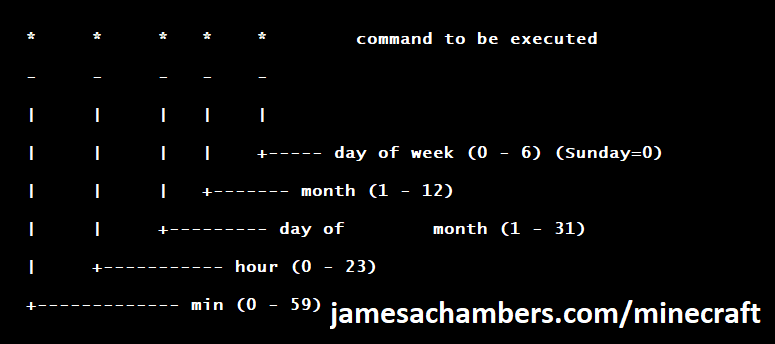
There are 5 fields here. The default restart time is set to reboot at 0 minutes of the 4th hour of the day (4 AM). The other 3 fields are left as * to represent every day of every month. Make any desired changes here and press Ctrl+X to exit nano and update the cronjob.
To remove the daily reboot simply delete the line and save.
Reconfigure / Update Scripts
The scripts can always be reconfigured and updated by downloading the latest SetupMinecraft.sh and running the installer again. It will update all of the scripts in the Minecraft directory and reinstall the startup service for you.
Running SetupMinecraft.sh again will also give you a chance to reconfigure options such as the memory dedicated to the server, daily reboots, starting the server on boot, etc.
This will not overwrite your world or any other data so it is safe to run!
Port Forwarding
If everyone on your server is on the same LAN or WiFi network as you then you don’t need to do this. If you want people to connect from outside your local network then you need to set up port forwarding on your router.
The process for this is different for every router so the best thing to do is just look at your router and find the model # and put that in google with port forwarding for easy instructions on how to do it for your specific router.
You want to forward port 19132. The type of connection is both TCP and UDP. On some routers you need to do both a TCP entry and then a second entry as UDP.
Once you do this people will be able to connect to your Minecraft server through your public IP address. This is different than your local IP which is usually a 192.x.x.x or 10.x.x.x. If you don’t know what that is just go to google and type “what’s my ip” and Google will kindly tell you!
Version Override
You can revert to a previous version with the revert.sh script included in your directory like this:
james@jamesgigabyte-linux:~/minecraftbe/james$ ./revert.sh Set previous version in version_pin.txt: bedrock-server-1.19.10.20.zip
If you have a specific version you would like to run you can also create version_pin.txt yourself like this:
echo "bedrock-server-1.18.33.02.zip" > version_pin.txt
The version hold can be removed by deleting version_pin.txt. This will allow it to update to the latest version again!
Wired vs. Wireless
Going with an ethernet (wired) connection is going to be faster and more reliable. There’s so much wireless traffic and other interference in the air that running your server on WiFi is not recommended.
Even if it is working great 99% of the time it can ruin your experience very quickly if the WiFi drops for a couple of seconds and you get blown up by a creeper!
All that being said, the server works fine on wireless. The script will work fine as is with a wireless connection.
Benchmarking / Testing Storage
If you’re getting poor performance you may want to run my storage benchmark with:
sudo curl https://raw.githubusercontent.com/TheRemote/PiBenchmarks/master/Storage.sh | sudo bash
PC results won’t show up on the site yet (it’s meant for Raspberry Pi) but it will run on Linux just fine and give you a score. If you search for the model of your drive on Pi Benchmarks you can compare your score with others and make sure the drive is performing correctly!
Troubleshooting Note – Oracle Virtual Machines
A very common problem people have with the Oracle Virtual Machine tutorials out there that typically show you how to use a free VM is that the VM is much more difficult to configure than just about any other product / offering out there.
It is because there are several steps you need to take to open the ports on the Oracle VM. You need to both:
- Set the ingress ports (TCP/UDP) in the Virtual Cloud Network (VCN) security list
- *and* set the ingress ports in a Network Security Group assigned to your instance
Both of these settings are typically required before you will be able to connect to your VM instance. This is purely configuration related and has nothing to do with the script or the Minecraft server itself.
I do not recommend this platform due to the configuration difficulty but the people who have gone through the pain of configuring an Oracle VM have had good experiences with it after that point. Just keep in mind it’s going to be a rough ride through the configuration for most people.
Troubleshooting Note – Hyper-V
There is a weird bug in Hyper-V that breaks UDP connections on the Minecraft server. The fix for this is that you have to use a Generation 1 VM with the Legacy LAN network driver.
Conclusion
The Minecraft Bedrock Edition dedicated server runs much better than previous third party servers in the past that were missing critical features. The performance is very good even on low end hardware. It has never been easier to set up a Minecraft Bedrock server.
If you have any feedback or suggestions let me know in the comment section. A lot of the changes and developments in this script and guide are directly from readers.
Have fun!
Other Resources
For a guide on how to set up resource packs check out my Minecraft Bedrock Resource Pack guide
If you’re trying to run this on the Raspberry Pi check out the Raspberry Pi specific guide here



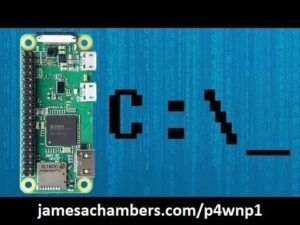
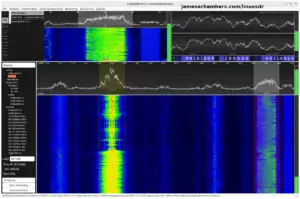
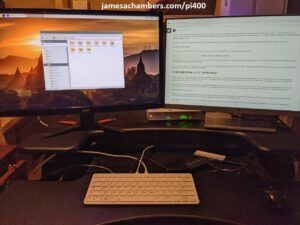
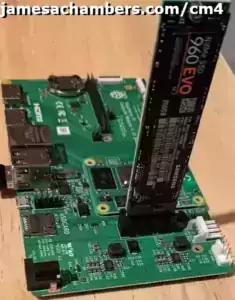

I can’t connect to my server using my ip (i used # ip address and yes I put in the ip from the second inet), do you have any tips on what could be wrong or if I’m just using the wrong ip?
Hey Splatube,
It’s usually only when people are using Oracle and Hyper-V that we see this issue. Sometimes UFW is set to block the ports but it depends on what setup you’re running for sure. Can you tell us which OS and version you’re running?
If you do have Oracle or Hyper-V the GitHub has some special instructions to help you get yours configured. I would say it’s 75% of the time that they are using Oracle or Hyper-V and the other 25% of the the time it’s a firewall issue. I should be able to help further if you let me know which OS it is (or if you know it’s Oracle/Hyper-V check out the GitHub documentation as it will tell you what to do).
Hopefully that helps!
Hey, Minecraft updated, when could I expect the new update for the server? I ran the ./update.sh a couple times, but it doesnt update to 1.19.30. Anyway, thanks for the program, saved me a lot of time.
Hey Schmc444,
Welcome and thanks for the kind words! So basically the problem is Microsoft. The script checks for updates from Microsoft’s web site every time you restart the server.
Basically on some updates they don’t always post the server right when it becomes available in the store. It’s not too often but it comes up from time to time. The way to get the server to update though is to just restart it (but Microsoft needs to upload the update before it will have anything to update to). Hopefully that helps!
Hey James,
Thank you for this, first time ever setting up a server. I have two questions. What time zone is the auto restart set for, and is there a way to have some sort of countdown for server reset to show in world chat?
Hey JustinM,
Great questions! So there is a countdown before the restart. It’s scheduled by 4am by default no matter what your timezone is (sudo dpkg-reconfigure tzdata).
You can edit the restart yourself with
crontab -e. If your timezone is set though you should be good to go here!I’m having an issue running multiple instances of the server on the same machine running Ubuntu 20.04.5 LTS.
I have one server running/connecting fine with the default ports 19132/19133 but when I try to get a second instance running using different ports 19134/19135 the server starts on random port instead. When I checked in screen -r I see the following message:
opening worlds/home/dbIPv4 supported, port: 19134
IPv6 supported, port: 19135
Server started.
IPv4 supported, port: 58527
IPv6 supported, port: 39748
The second set of ports changes to different values every time I start/stop. I can’t connect to the second server at any of the listed ports.
Hey John,
It’s 100% your platform. I take it this is the Oracle free VM. It might also be the alternative Hyper-V but I’d say 4/5 of these are Oracle and 1/5 of these is Hyper-V. Those are the only two setups this happens to. Nothing to do with the Bedrock server or these scripts I’m afraid.
The second set of ports is nothing. It’s an old bug:
#1
#2
#3
Now for fixing the Oracle issues:
Oracle #1
Oracle #2
Oracle #3
#4
If this is Hyper-V please see the following threads:
Hyper-V #1
Hyper-V #2
It does not involve the script in any way (or the ports bug which has been in the Bedrock server for 3-4 years at least now). It comes up basically every day. I already did my one for the day here so this one I’m just going to post links to (and probably just make a template for this to reply with / add it to the documentation).
If this happens to you it’s simply that your platforms ports aren’t open and you need to configure them (it’s the same for Hyper-V but it’s due to a weird bug in the UDP layer). If you simply tried with any other provider that would also fix it. It’s because everyone is following the free Oracle VM tutorial that won’t actually give you a functional server (and apparently I support it or it’s where everyone comes at least but I would never recommend anyone actually use it, I trash it every opportunity I get and specifically use AWS/Amazon/Lightsail for all my hosting and have never had to deal with any issues like this but no it’s not free). I should honestly stop supporting these issues altogether as it’s literally every day and it’s just due to using free providers that aren’t going to support you (that’s why you’re here).
I haven’t yet though so hopefully that helps! It’s definitely coming though. I’m not interested in supporting these free VMs at all and it’s getting to the point where I’m going to have to address it either by just documenting it and saying that’s it, if you can’t figure it out from the documentation then get a different provider or something like that. Maybe the standalone version should die and it should go pure Docker. That would certainly solve a lot of problems for me and I already recommend the Docker versions over this but it still won’t solve the free VMs people are using (free for a reason, they are 10x harder to configure) that they have no idea how to configure (nor do the guides people are following to do this tell them how to correctly configure it and yes I’m aware the blog is written by Oracle themselves in that case and it’s still wrong and my links will demonstrate that).
I’m not sure what to do about it yet. I have no issue with people using the Oracle and Hyper-V VMs. I definitely have an issue with supporting everyone who tries to do this because it’s really, really hard to set up correctly. You will fail the first time. I would fail the first time. This project is not about supporting these freemium products but I understand that when you’re setting something up for the first time there’s no way of knowing all of this so don’t take this as me being upset with you. It’s putting me in an impossible position is all I’m trying to explain. I can’t afford to spend time supporting their freemium VMs. I literally can’t as in I do not have enough money to spare to spend my time working on that vs. the other things on the site / projects I’m trying to do. Changes are going to have to be coming to this project to address this though at this point, that is very clear.
It’s actually not a VM, it’s a physical workstation I repurposed for a server. The spec is a Dell Precision T5610 that I use as a game server on my local network (connections are wired). I’m kind of stumped, the fact that it connects to the first instance but refuses connections to the second is strange.
Hey John,
That’s very interesting, thanks for providing some details of the setup! So if I’m understanding correctly the first instance works and you can connect to it but the second one won’t let you connect.
I take it you are using different ports on each instance and that if you had to do something with your firewall that you would already know how to open the ports up from doing it from the first instance. The ports seem like the most likely thing to cause this as that is something we would expect to conflict of the ports are the same.
What do your log files / startup look like? Is the server running normally on the second instance but just nobody can connect?
Starting Server 1
[2022-09-14 09:50:00] NO LOG FILE! - setting up server logging...[2022-09-14 09:50:00] [2022-09-14 09:50:00:387 INFO] Starting Server
[2022-09-14 09:50:00] [2022-09-14 09:50:00:387 INFO] Version 1.19.22.01
[2022-09-14 09:50:00] [2022-09-14 09:50:00:387 INFO] Session ID 7272d9e8-be72-475e-bbd6-6c336b31fa6a
[2022-09-14 09:50:00] [2022-09-14 09:50:00:387 INFO] Level Name: Bedrock level
[2022-09-14 09:50:00] [2022-09-14 09:50:00:389 INFO] Game mode: 0 Survival
[2022-09-14 09:50:00] [2022-09-14 09:50:00:389 INFO] Difficulty: 1 EASY
[2022-09-14 09:50:00] [2022-09-14 09:50:00:431 INFO] opening worlds/Bedrock level/db
[2022-09-14 09:50:01] [2022-09-14 09:50:01:003 INFO] IPv4 supported, port: 19132
[2022-09-14 09:50:01] [2022-09-14 09:50:01:003 INFO] IPv6 supported, port: 19133
[2022-09-14 09:50:01] [2022-09-14 09:50:01:265 INFO] Server started.
[2022-09-14 09:50:01] [2022-09-14 09:50:01:294 INFO] IPv4 supported, port: 51028
[2022-09-14 09:50:01] [2022-09-14 09:50:01:294 INFO] IPv6 supported, port: 50320
[2022-09-14 09:50:01] [2022-09-14 09:50:01:316 INFO] ================ TELEMETRY MESSAGE ===================
[2022-09-14 09:50:01] [2022-09-14 09:50:01:316 INFO] Server Telemetry is currently not enabled.
[2022-09-14 09:50:01] [2022-09-14 09:50:01:316 INFO] Enabling this telemetry helps us improve the game.
[2022-09-14 09:50:01] [2022-09-14 09:50:01:316 INFO]
[2022-09-14 09:50:01] [2022-09-14 09:50:01:316 INFO] To enable this feature, add the line 'emit-server-telemetry=true'
[2022-09-14 09:50:01] [2022-09-14 09:50:01:316 INFO] to the server.properties file in the handheld/src-server directory
[2022-09-14 09:50:01] [2022-09-14 09:50:01:316 INFO] ======================================================
Starting Server 2
[2022-09-14 09:52:30] NO LOG FILE! - setting up server logging...[2022-09-14 09:52:30] [2022-09-14 09:52:30:642 INFO] Starting Server
[2022-09-14 09:52:30] [2022-09-14 09:52:30:642 INFO] Version 1.19.22.01
[2022-09-14 09:52:30] [2022-09-14 09:52:30:642 INFO] Session ID e3357742-14f7-4fef-a123-efb26c6f9834
[2022-09-14 09:52:30] [2022-09-14 09:52:30:642 INFO] Level Name: home
[2022-09-14 09:52:30] [2022-09-14 09:52:30:643 INFO] Game mode: 0 Survival
[2022-09-14 09:52:30] [2022-09-14 09:52:30:643 INFO] Difficulty: 1 EASY
[2022-09-14 09:52:30] [2022-09-14 09:52:30:686 INFO] opening worlds/home/db
[2022-09-14 09:52:30] [2022-09-14 09:52:30:256 INFO] IPv4 supported, port: 19134
[2022-09-14 09:52:30] [2022-09-14 09:52:30:256 INFO] IPv6 supported, port: 19135
[2022-09-14 09:52:31] [2022-09-14 09:52:31:518 INFO] Server started.
[2022-09-14 09:52:31] [2022-09-14 09:52:31:545 INFO] IPv4 supported, port: 47595
[2022-09-14 09:52:31] [2022-09-14 09:52:31:545 INFO] IPv6 supported, port: 45229
[2022-09-14 09:52:31] [2022-09-14 09:52:31:568 INFO] ================ TELEMETRY MESSAGE ===================
[2022-09-14 09:52:31] [2022-09-14 09:52:31:568 INFO] Server Telemetry is currently not enabled.
[2022-09-14 09:52:31] [2022-09-14 09:52:31:568 INFO] Enabling this telemetry helps us improve the game.
[2022-09-14 09:52:31] [2022-09-14 09:52:31:568 INFO]
[2022-09-14 09:52:31] [2022-09-14 09:52:31:568 INFO] To enable this feature, add the line 'emit-server-telemetry=true'
[2022-09-14 09:52:31] [2022-09-14 09:52:31:568 INFO] to the server.properties file in the handheld/src-server directory
[2022-09-14 09:52:31] [2022-09-14 09:52:31:568 INFO] ======================================================
netstat -plan | grep bedrock(Not all processes could be identified, non-owned process info
will not be shown, you would have to be root to see it all.)
udp 0 0 0.0.0.0:51028 0.0.0.0:* 82974/bedrock_serve
udp 0 0 0.0.0.0:19132 0.0.0.0:* 82974/bedrock_serve
udp 0 0 0.0.0.0:19134 0.0.0.0:* 83201/bedrock_serve
udp 0 0 0.0.0.0:37909 0.0.0.0:* 83201/bedrock_serve
udp6 0 0 :::50320 :::* 82974/bedrock_serve
udp6 0 0 :::19133 :::* 82974/bedrock_serve
udp6 0 0 :::19135 :::* 83201/bedrock_serve
udp6 0 0 :::45849 :::* 83201/bedrock_serve
Manual connecting to the server on 19132 works but not for 19134
Hey John,
I think I know what is going on. Can you change your other server off of ports 19132 and 19133? That means that after your changes there will be zero servers using port 19132 and 19133.
I have seen this bug before. It’s some kind of port conflict. It involves the second set of random ports that opens up after your original ones (a bug) but it seems like there’s some kind of additional conflict on some systems. In the past setting all ports to custom ports has fixed this. It has been a while since I’ve seen one of these happen but it has come up before.
Can you give this a try and see if when none of your servers are using the default ports at all this weird conflict goes away?
When I changed to all non default ports I couldn’t connect to either server. I double checked my firewall and I deleted the old rules and added them again. That fixed it so it looks like it was a bug in UFW.
Hey John,
No worries at all, I’m glad you’re up and running and thanks for letting us know what it was. This is a very useful troubleshooting trick for UFW for sure to remove the rules and add them back in again clean. I bet this will help people in the future reading this.
Enjoy and take care!
hola disculpa instale el serve pero tengo mucho lag y no jugamos mas de 5 personas lo ejecuto en VM ampere y 24 ram que soluciones puedo aplicar?
Hey Daniel,
Is it an ARM system or x86_64 system? I’d only expect it to lag if it’s 32 bit ARM which has a lot of emulation. If it’s running 64 bit ARM it should definitely be faster. Hopefully that helps!
Hi James,
i still run my two Server without any Problems since i uses your script. that i really woderful. No here is my Question. I just saw that you release a way to brind java and bedrock together.
is there a way to do it without docker ?
i have some linux debian machine free to play with but i have no cloue about docker.
Can i modify the server in some way so that user from java can join or do i have to do a complete new setup?
thanks
eike
Hey Eike,
You can absolutely do this on the standalone version! The Docker container just installs the Geyser and Floodgate plugins.
They are both available on their Wiki. You just download the files and put them in your plugins folder basically. It’s not very difficult but there is a decent amount of configuration which is why I prepackage it as the Docker container but there’s absolutely nothing crazy in it and it is basically just this with 2 additional plugins installed.
If you’ve ever installed any other plugins before it will be super easy and if not it’s still super easy but it might take you a couple of tries to get everything quite right the first time. Hopefully that helps!
Eike – just throwing in a comment here; don’t be afraid of the docker thing – I’m a complete newbie, and it worked really well.
I’ve been using James’ fantastic standalone server for more than a year for the kids in junior’s school class, but wanted the java/br combo. Took me (complete blank) a few hours from nothing to fully running.
(and the best part; you can run this for free on oraclecloud – with a pretty beefy server config if needed)
Biggest change for me was on “detatching” and “reattaching” -> in screen, it’s “Ctrl-A, Ctrl-D” + “screen -r”, in docker it’s “Ctrl-P, Ctrl-Q” + “docker attach {img}” – the image file can be auto-completed by TAB, so in my server with only one running docker, it becomes very manageable.
Best of luck!
-H
Hey Henrik,
Thanks for leaving this! I think you’re right for sure. Thanks for reminding me why I made this as I was for sure a bit frustrated and this helps. Take care!
Hey, awesome work!
I’m running a host server of Server 2012 r2 with 32GB of RAM. I have created fresh VM installs of both Ubuntu Server and Ubuntu Desktop inside of Hyper-V, each with 8GB RAM allocated. I’ve followed the instructions and setup the Minecraft server in both environments, however I’m having the same issue in both. I’m only running one VM at a time and wanted to try both environments just to see if one worked better than the other. Neither of them have firewalls active.
I have tried connecting via my Galaxy S21 Ultra and my PS4, both running current versions of Minecraft. Both can see the Minecraft server and try to connect, however end up giving the “Connection timed out. Unable to connect to world.” error message. I’ve got port forwarding setup and can see the Minecraft server from my phone when not on Wi-Fi, however it gives the same error when trying to connect.
Any thoughts or ideas as to why I’m having this issue?
Thanks!
Hey Matt,
This is a common Hyper-V issue. It needs to be a Gen 1 VM using the legacy network driver.
Definitely see these threads: #1
#2
That should get it going for you!
That’s amazing! That’s exactly what I needed and was able to get it going! Thank you so much! I had it as Gen 1, however wasn’t using the legacy driver. As soon as I got the legacy driver setup, it worked like a charm.
Hey Matt,
Excellent, I’m so glad that worked well for you! That was knowledge we had to learn together as that was one of the hardest ones to troubleshoot/solve that I had ever faced.
Definitely enjoy and have fun!